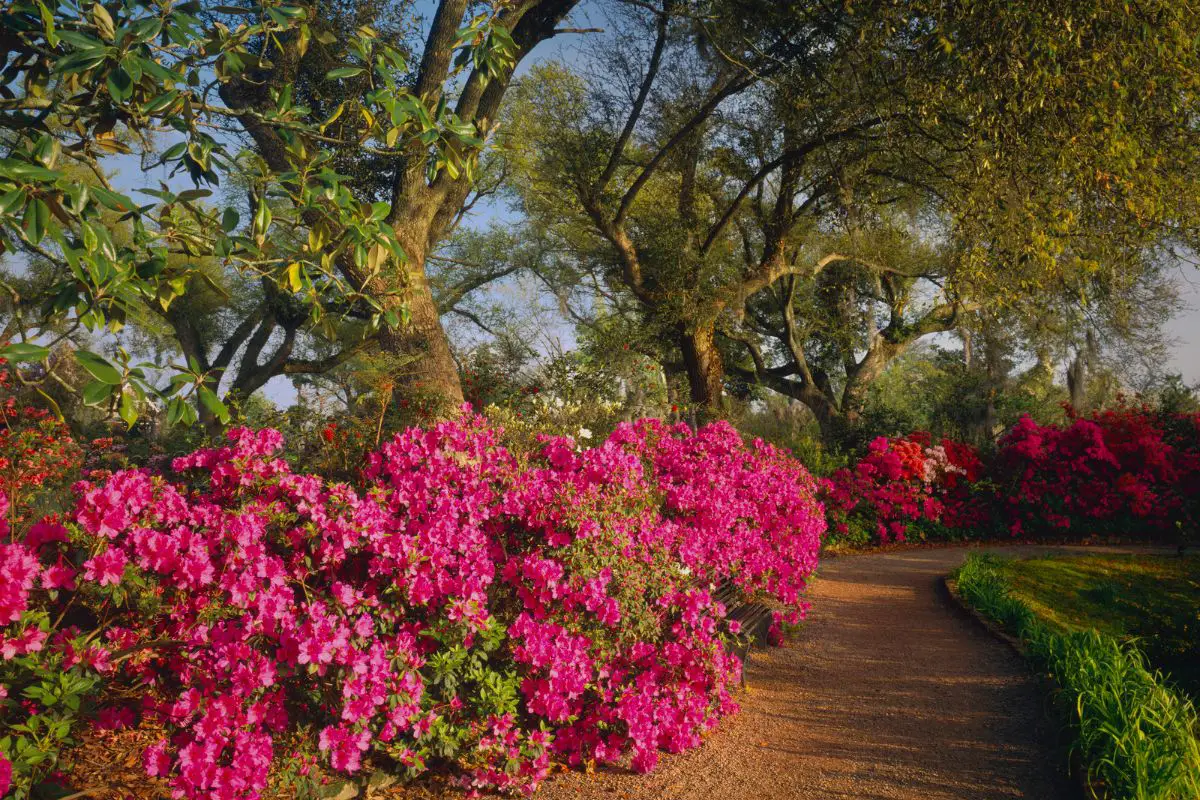In nature, there are all kinds of conditions in which plants live. Some areas are dry and hot with the sun beating down relentlessly, day after day. And still, other areas are shaded by larger plants, trees, and rock formations continually.
But regardless of where you look, you will find many varieties of perennial plants that do well for themselves under almost any climate and ecosystem. Many plants thrive in the shade of swamps and marshes, forested mountains, and even your backyard.
Table of Contents
Partially Shaded Perennials
Partial shade perennials are plants that prefer 2-6 hours of direct sunlight in the morning and are shaded for the rest of the day. Partial shade perennials include columbines, ladybells, Solomon’s seal, viburnum, and hydrangeas. These flowers are able to flourish in partial shade, adding depth to areas that get overlooked.
Understanding where and how these perennial plants grow in the wild is the best way to decide on placement in the garden or landscape.
Quick List of Partial Shade Perennials
Here is a quick list of our favorite partial shade perennials. These plants have many uses that can help define a garden or area.
- Columbines
- Ladybells
- Solomon’s seal
- Viburnum
- Hydrangeas
- Hollys
- Vernal witch-hazel
- Bear’s breeches
- Astilbe
- Toad lily
- Monkshood
- Hellebores
- Bleeding heart
- Lily of the valley
- Dianthus
Now let’s take a closer look at our top 5. These perennials are perfect for partially shaded garden areas.
Top Five Partial Shade Perennials
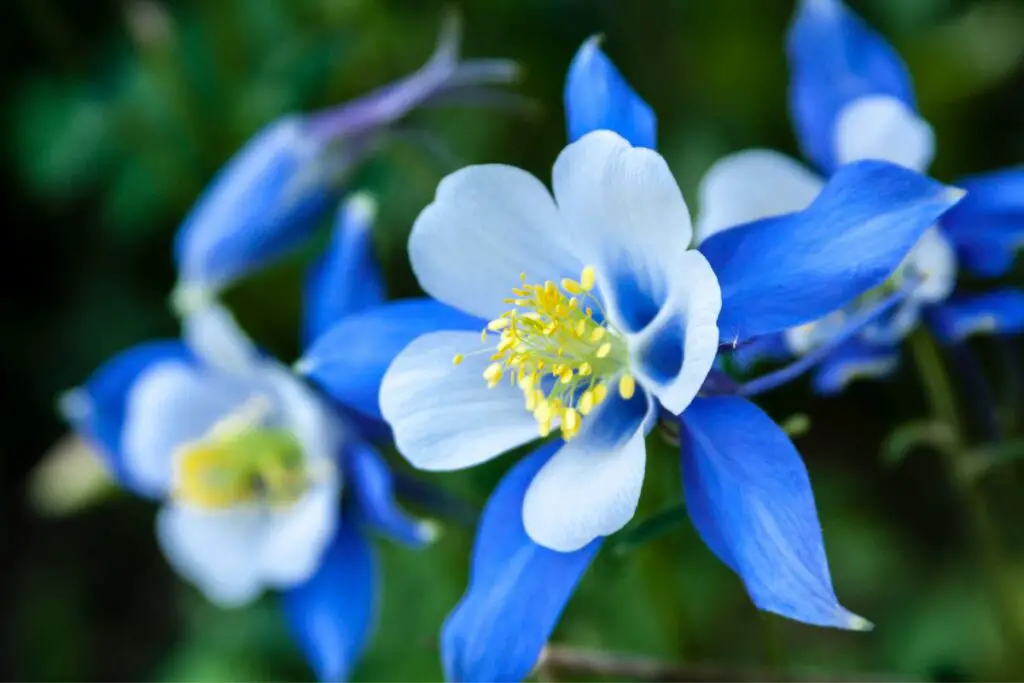
Columbine
Columbines are hardy plants that are deer-resistant and great for pollinators. With over seventy species of columbine, their two-tone flowers come in blue, orange, pink, red, white, and yellow. While this flowering perennial does not like deep shade, it does great in partial shade areas.
- Growing Zones 3-9
- Full Sun to Partial Shade
- Height 24-32”
- Spacing 1-2’
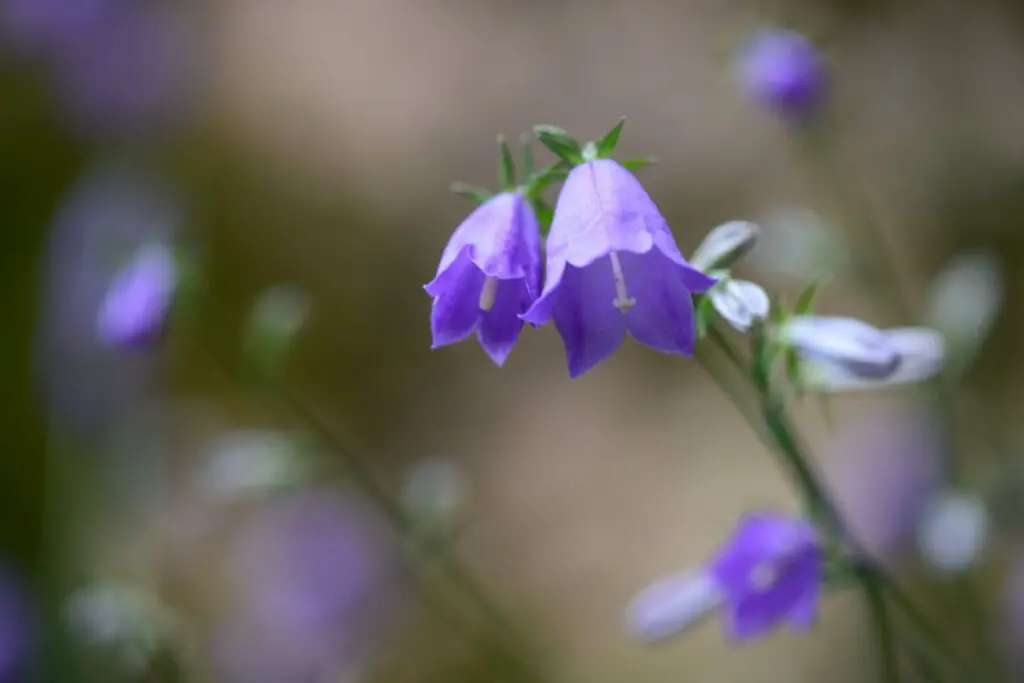
Ladybells
Ladybells are herbaceous perennials that grow well in many types of soil as long as it is kept moist and well-draining. Also known as false campanula, ladybells work well in woodland gardens and cottage gardens adding interest and design elements with their height of around three feet tall.
- Growing Zones 3-7
- Full Sun to Partial Shade
- Height Up to 3’
- Spacing 12-18”
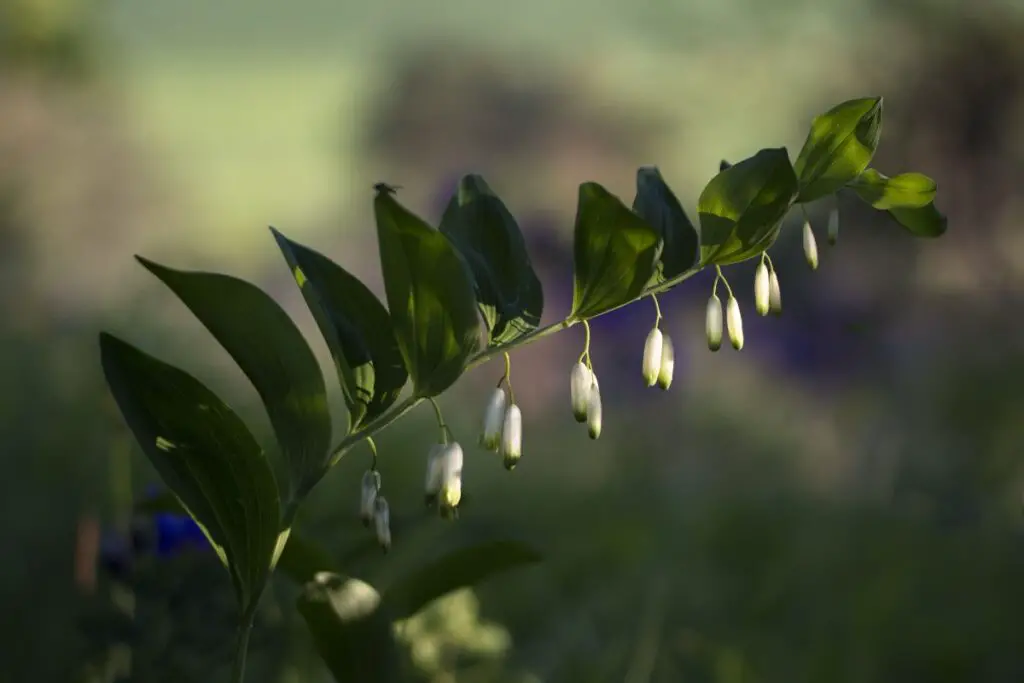
Solomon’s Seal
A native of woodland areas, Solomon’s seals are true partial shade perennials usually found growing in the wild in dappled shade, under large trees. While these plants have beautiful flowers they are grown for their foliage. They are easy to care for and to propagate.
- Growing Zones 3-9
- Partial Shade
- Height 6”-7’
- Spacing 3’
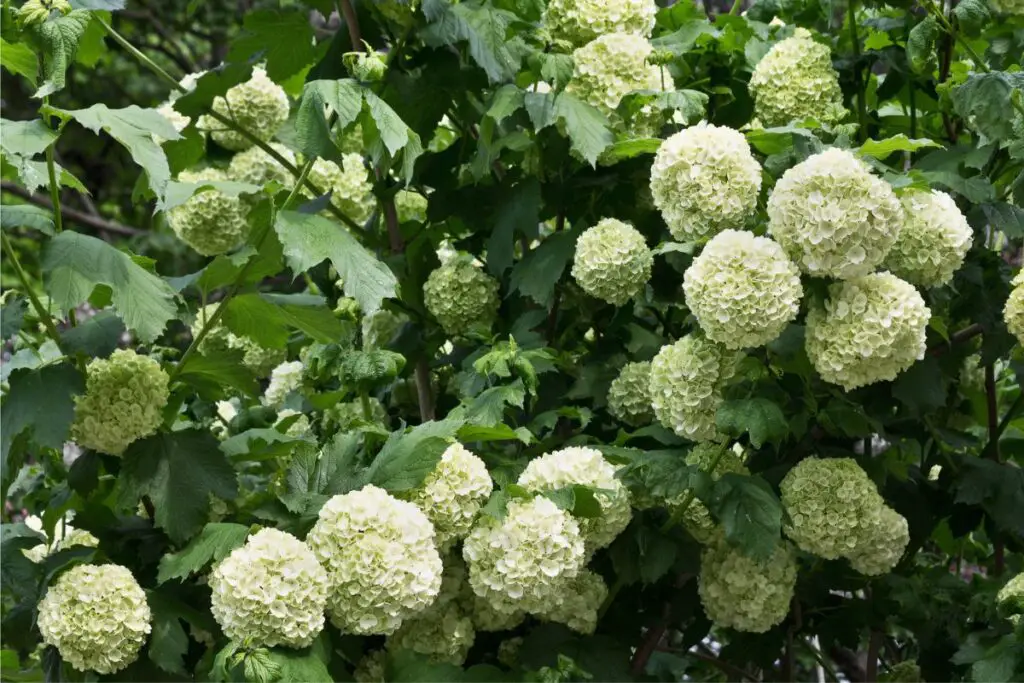
Viburnum
Viburnum is another perennial that does well in full sun or partial shade. These shrubs come in many varieties from deciduous to evergreen and with many types of foliage. They are native to North America and are very hardy plants.
- Growing Zones 2-9
- Full Sun to Partial Shade
- Height 3-20’
- Spacing 3-4’
See our article for Perennials That Bloom All Summer
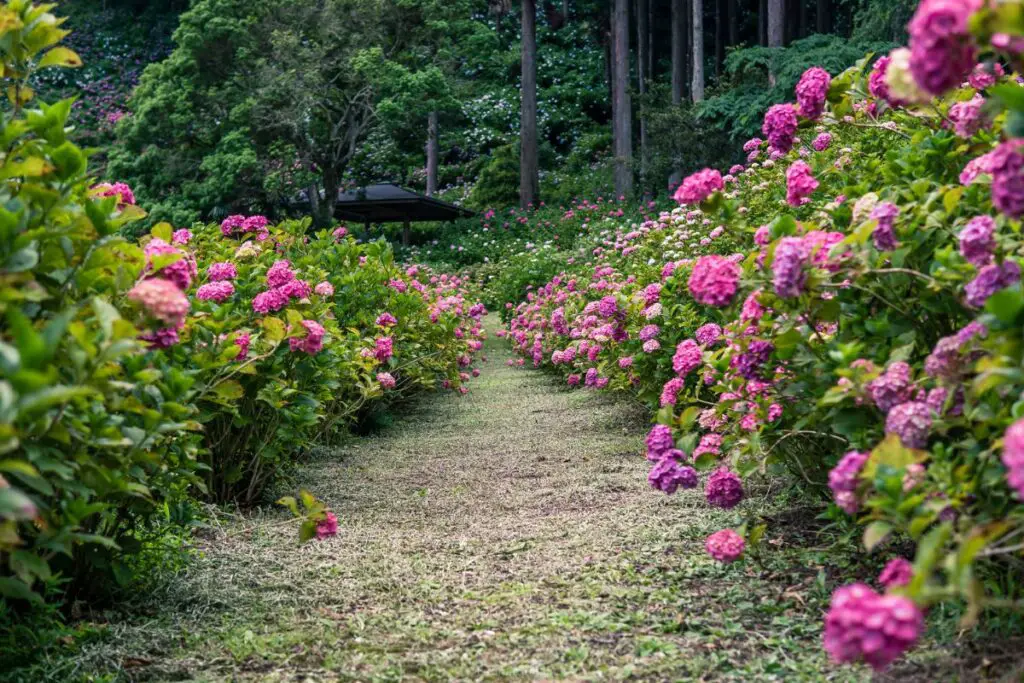
Hydrangea
Hydrangeas are another very versatile garden plant. They can be grown as trees, shrubs, and vines. Their mass of beautiful blooms can come in blue, green, pink, purple, red, and white. They are great for pollinators and can tolerate many types of soil and light conditions including partial shade.
- Growing Zones 3-9
- Full Sun to Shade
- Height 2-6’
- Spacing 3-10’
Tall Partial Shade Perennials
There are many elements to a garden. Woodland gardens are one of my favorite shady gardens and they are a perfect example of this. Winding paths, combined with light and shade, give our gardens a sense of mystery and allure.
Tall, partial-shade perennials are an important aspect of this and help us fulfill our goals to achieve these elements. There are many excellent tall perennials that are great for partial shade areas.
One of my favorite things about gardening is the layers. Underpinning below underpinning, and canopy above canopy. These layers evoke a sense of rhythm and rise.
There are many tall perennials that are native growers and are perfect for a number of uses. Herbaceous and woody perennials can serve as a backdrop or a focal point and they can be used to separate one area from another.
When talking about tall perennials and their uses the first place to start is with shrubs, both deciduous and evergreen. Many people use evergreen shrubs for privacy and as borders.
Most of both kinds have beautiful flowers, bright berries, and awesome fall foliage. Some of our favorite perennial shrubs are hollies, vernal witch-hazel, and viburnum. Some of these shrubs, such as viburnum, come in deciduous and evergreen varieties.
There are also many herbaceous perennials that add flare and boldness with dramatic results. While still others bring about a sense of comfort with soft colors and lush foliage.
Some of our favorite herbaceous, tall, shade-perennials include bear’s breeches, varieties of astilbe, toad lily, and monkshood as well as many others.
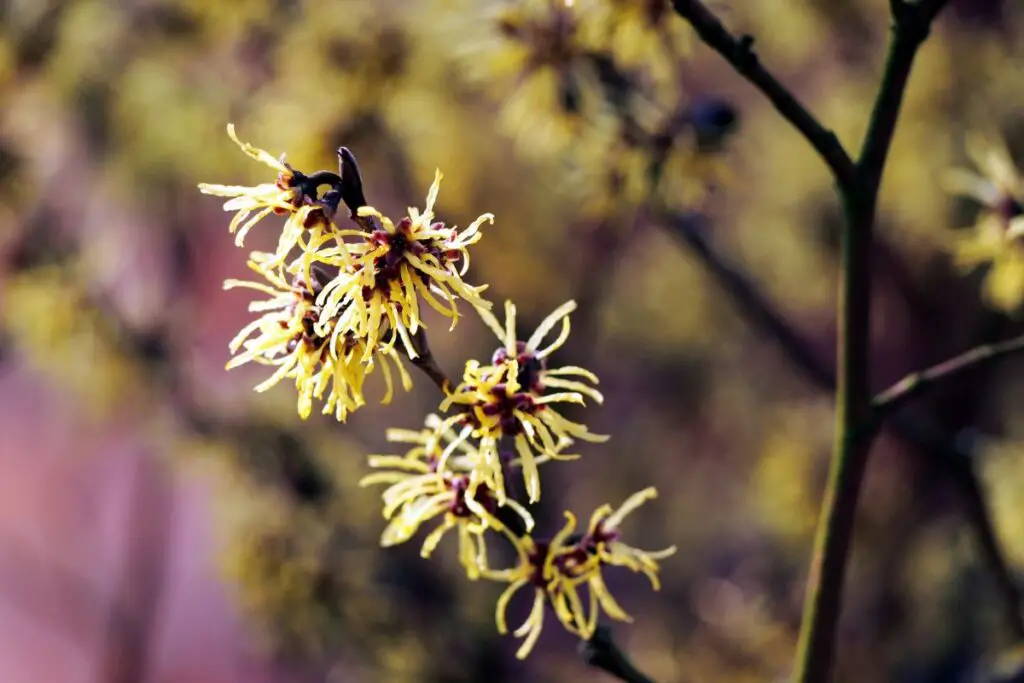
Low-maintenance Partial Shade Perennials
With many partial shade perennials, especially shrubs, it is a good idea to amend the soil with compost and even add some starter fertilizer when planting. Low-maintenance perennials will grow for years without worrying about cold or heat tolerance, dividing, or an overabundance of pests and diseases.
The only regularly occurring concern for these plants is making sure they have enough water. Many partial-shade perennials can also thrive in full sun applications.
Along with designing and installing gardens and landscapes, comes the task of maintaining them. Careful planning and plant selection cut down on the time necessary to care for these plants, giving us room to experiment and make changes, year to year and season to season.
Low-maintenance perennials can be used to add simplicity, balance, and symmetry. They can include shrubs, ground cover, and even many beautiful flowering perennials that are low maintenance and perfect for partial shade conditions.
Partial Shade Perennial Flowers
Many flowering perennials rely on the energy they receive from the sun to produce all those beautiful blooms. This is not always the case, however, as there are many wonderful flowering perennials for full shade and even more for partial shade.
Two classic flowering shade perennials are the hellebore and the bleeding heart. The old-fashioned bleeding heart has long been a staple of shade gardens and is native to the woodland areas of the central Appalachians.
Hellebores are native to Mountainous woodland regions of Europe and have become very popular in the U.S.
While they are not native to the United States they are not invasive. Commonly known as the Lenten rose, there are many hybridized species available to grow in the garden that produces masses of beautiful blooms.
See our Ultimate Guide for Hellebores
Both of these lovely flowering perennials can tolerate full sun to full shade. However, when placed in full shade they will most likely not bloom as well as they do in partial shade. Like hellebores, bleeding hearts have many hybrids developed to support vigorous blooming and increase heat tolerance.
Many low-growing perennials exist that are great for ground cover as well as the beautiful flowers they produce. Good examples of this are lily of the valley and Dianthus (pinks).
Many shade plants are chosen for their foliage such as hostas and ferns. While these make a great addition to any garden, there are so many wonderful flowering perennials for partial shade that we are not limited to just foliage-bearing plants.
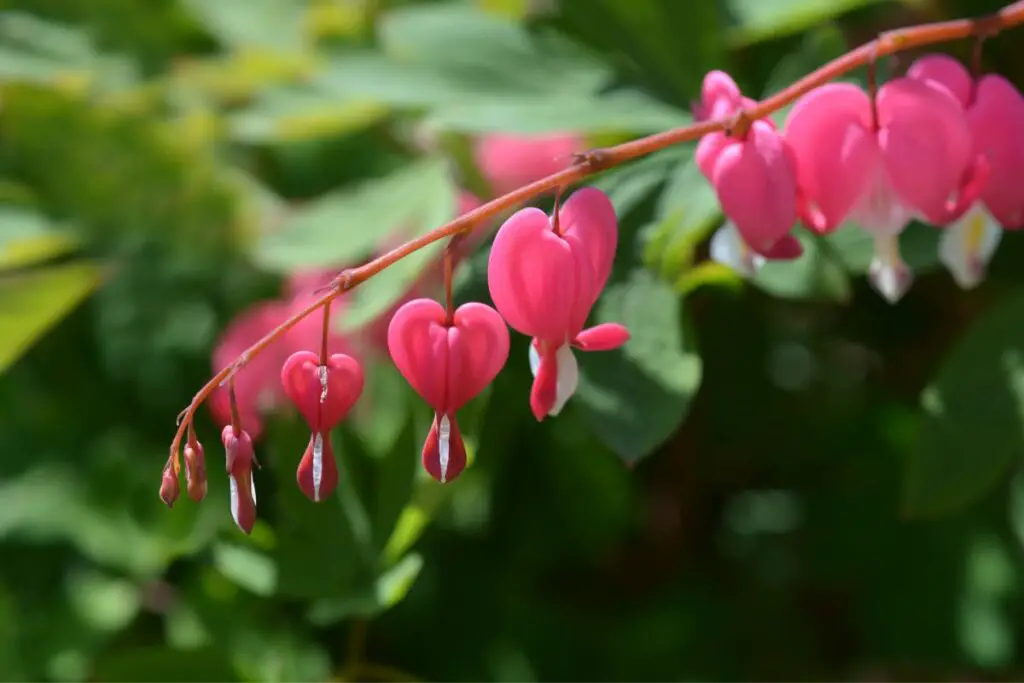
In Conclusion
When you are looking for that perfect plant to go on the border of sun and shade in your garden or landscape, don’t worry, you have plenty to choose from.
Partial shade perennials are numerous and come in all shapes and sizes. Bushes and shrubs, ground cover, and beautiful flowering perennials are all made for the shade.

